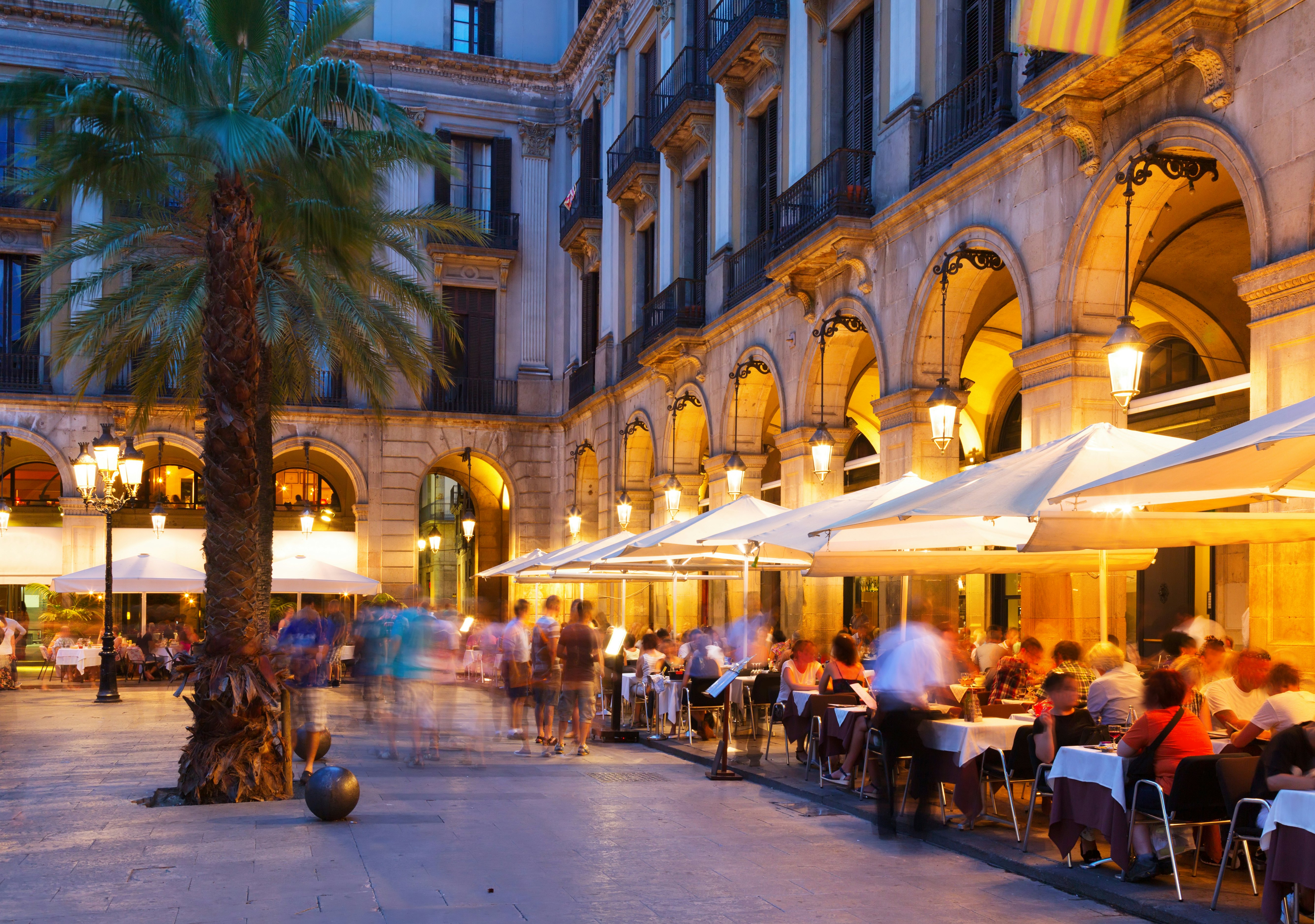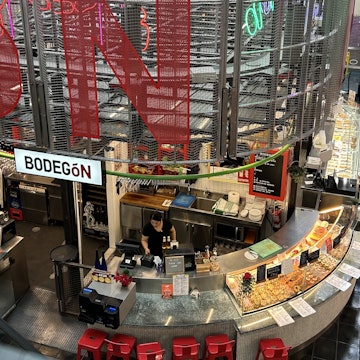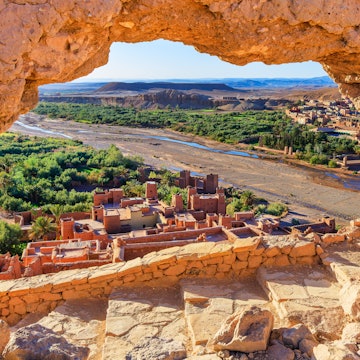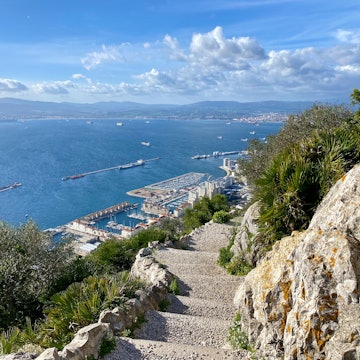

Here's what you need to know to get ready for a trip to places like Madrid in Spain. Songquan Deng/Shutterstock
Spain has been home for the past 16 years, ever since I moved to its capital Madrid in my early 30s.
From day one, it was easy to be charmed by this warm and inviting country. It ticks off a lot of boxes in terms of what you’re looking for in a European destination – great cuisine and wine, spectacular landscapes, architectural gems, green spaces and a thriving art scene.
Getting around the country is also very convenient, thanks to Spain's efficient and reliable multi-modal public transport system. And the Spanish people are some of the friendliest locals, who will happily go out of their way to point you in the right direction if you’re lost.
Of course there were still some cultural quirks I had to adjust to – for one, eating times in Spain are very late in comparison with the rest of the world's dining schedules. I still remember my early days in Madrid when my belly would be in outright rebellion while waiting for “early” dinner reservations at 9pm. And forget about making a speedy exit from social gatherings; in Spain saying farewell could take up another hour of your time.
Cultural idiosyncrasies aside, your trip to this incredible country may be your most memorable yet if you plan ahead and follow these useful travel tips.

1. Pack warm clothes. Really.
There is a humorous Spanish expression that goes, “Hasta cuarenta de mayo, no te quites el sayo,” which translates to “Until the 40th of May, don’t remove your coat” – sage advice to keep a jacket handy until mid-June. While Spain may be famous for its blue skies and sun-drenched beaches, it actually has more colder seasons in the year than warm ones: early spring (March to May), autumn (September to November) and winter (December to February). Regions in northern Spain, such as the Basque Country, Asturias and Galicia, have cooler temperatures compared to the rest of the country.
2. Being cashless is common
Card is king in Spain. The main tourist hubs such as Madrid, Barcelona, San Sebastián and Ibiza are generally credit card-friendly destinations. In fact, you could go cashless for days and pay for your meals, drinks, taxis and bus fares without a problem using a credit or debit card.
If you do bring cash, make sure you have loose change. Some establishments, bus and taxi drivers, especially on morning shifts, usually do not have change for bigger bills. So if you prefer paying cash, it’s a good idea to be stocked up on smaller bills (€5 and €10) and coins.
3. Choose your time to visit Madrid wisely
Think twice about visiting Madrid in August. Most establishments in the Spanish capital close, and madrileños usually head for the beaches to escape the brutal August heat.

4. Expect to eat late
Prepare for late Spanish dining times. Many tourists who come to Spain for the first time end up hungry while waiting for restaurants to open. Most restaurants open for lunch from 1pm to 4pm, and dinner from 8pm to 1am. A lot of establishments also close on Mondays. You can stave off hunger pangs before mealtimes by snacking on tapas – small savory plates that are usually free with a drink order in many Spanish cities. In San Sebastián or Bilbao in the Basque Country, you can savor pintxos, or bite-sized portions typically served on a slice of bread and skewered with a toothpick.

5. Ordering certain drinks will immediately mark you as a tourist
A popular drink among tourists, sangría is usually served in pitchers meant for sharing, and not by the glass. Instead, try ordering a local favorite that’s similar to sangría, tinto de verano, a concoction of red wine and lemon soda.
Ask for a caña like a local instead of a cerveza. A caña is a small glass of beer on tap (about 250ml).
6. Tipping is not expected
European countries in general don’t have a tipping culture. But of course, it is very much appreciated – especially if you enjoyed good service.

7. Don't eat food while you’re on the move
Eating is an age-old pleasure that must be savored unhurriedly, so it’s very uncommon to see Spaniards biting sandwiches or munching on fries while walking down the street or riding public transportation.
8. Look for fixed-price lunches
Order the menú del día (daily menu) for lunch on weekdays. Take your cue from the locals and ask for the fixed-price menu (ranging from €8 to €17) that includes a three-course meal with dessert, drinks, bread and coffee.
9. Eat late, stay late
Make time for sobremesa – lingering long after a meal for a post-dining conversation. This is a hallmark of sociable Spanish culture, to extend conversations well beyond mealtimes to be able to enjoy each other’s company for as long as possible, usually over drinks.
10. Keep an eye on your belongings
Be vigilant of pickpockets and keep your belongings close. Pickpockets are unfortunately rampant in high tourist traffic areas in Spain. If you’re sitting at an outdoor table, watch out for vendors that get suspiciously close and distract you with their items for sale, such as flowers or lottery tickets, while they surreptitiously steal your wallet or mobile phone on the table (this is a modus operandi I’ve witnessed more than once!).
11. You can drink tap water in Spain
Go ahead and drink the tap water. Spanish tap water or “agua de grifo” is safe to drink, though the taste varies across regions.
12. There's one number for an emergency
Call 112 for any emergency. You can contact this number for any kind of emergency in Spain, even without a Spanish SIM card on your mobile phone. You’ll be connected to the right emergency service through multilingual operators. To contact the Spanish National Police, dial 091.

13. Dress appropriately when away from the beach
Opt for smart casual attire and avoid overly casual outfits like athleisure wear, beachwear, or excessively revealing clothing in the city. If you’re visiting religious sites such as churches, cathedrals or mosques, cover your shoulders and knees to show respect for these places.
14. Brush up on basic Spanish
Like any destination, it helps a lot if you know basic local phrases. While you can get by speaking English in the bigger, more touristy cities, it is a different story when visiting smaller, lesser-known towns outside the tourist radar.
Don't say “no problemo," which is incorrect. The correct phrase is “no hay problema” or more colloquially, say “no pasa nada."
15. Know what is considered polite
Greet people, even strangers. It’s commonplace to greet people in elevators, shops and along hallways. Compliment good service by saying “muy amable". Meaning “very kind,” this is a commonly used polite phrase to express gratitude for someone’s helpfulness. It can be said in different situations – if a person has gone out of their way to assist you, like giving you directions, holding a door or giving up their seat for you. You can also say this to show your appreciation for customer service that goes above and beyond.
16. Don’t leave a social gathering without saying goodbye
It is generally frowned upon to leave an occasion without letting your host know. However, be prepared for a long, drawn out goodbye – the Spanish are highly sociable people who like extending conversations, leading to lengthy, and often multiple, stages of farewells.
















